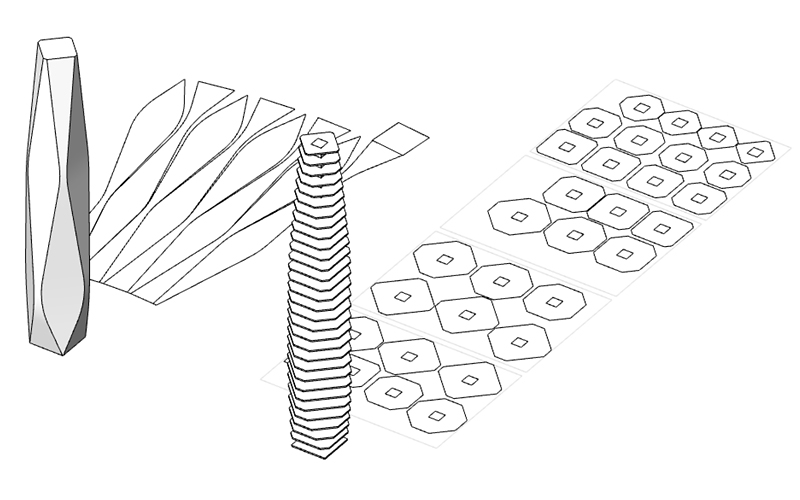- 3D-Modeling
- 3D-Print
- Cologne
- Digital Fabrication
- Laser Cutter
- Master
- Programming
Today’s use of digital technologies significantly expands the designer’s sphere of action and at the same time requires a changed understanding of the design process. Computer-aided form generation can produce an infinite variety of shapes based on simple, manageable rules. It is possible to master and present a different kind of complexity by using parametric models. The starting point is usually the defining of dependencies for the entire project geometry. This allows for the study of design versions based on different types of links of individual parameters. Not only is the shape of an object defined, but also the possible reactions to changes. The major added value of defining mathematical relationships between individual elements is that instead of the one-dimensional optimisation of one aspect, an interactive weighing of different requirements becomes possible.
Using the example of a high-rise design, the possibilities of parametric design were experimentally explored as part of the module „Technology and Design 2“. In addition to a parametric adaptation of individual elements, the goal was to generate qualitative changes with different characteristics within the building typology. Based on a rule-based design strategy, the students thus developed prototypes of a visionary high-rise architecture, which were gradually supplemented or enhanced with architectural themes (support structure, climate / energy, usage scenarios, contextualisation, facade development, etc.) in the continued process. In addition to presenting the development process and design result, the digital model was transformed into a different physical scale model using digital fabrication methods.
CREDITS
Joséphine Apaix, Mojdeh Barkhordar Kashani, Yves Christian Dowling, Lucas David Dyrda, Lina Geitner, Jovana Jovicic, Julian Lanser, Matthias Monka, Kathrin Roth, Johanna Katharina Witzel, Nils Michaelis
Marco Hemmerling, Philipp Meise
Faculty of Architecture, Cologne University of Applied Sciences













